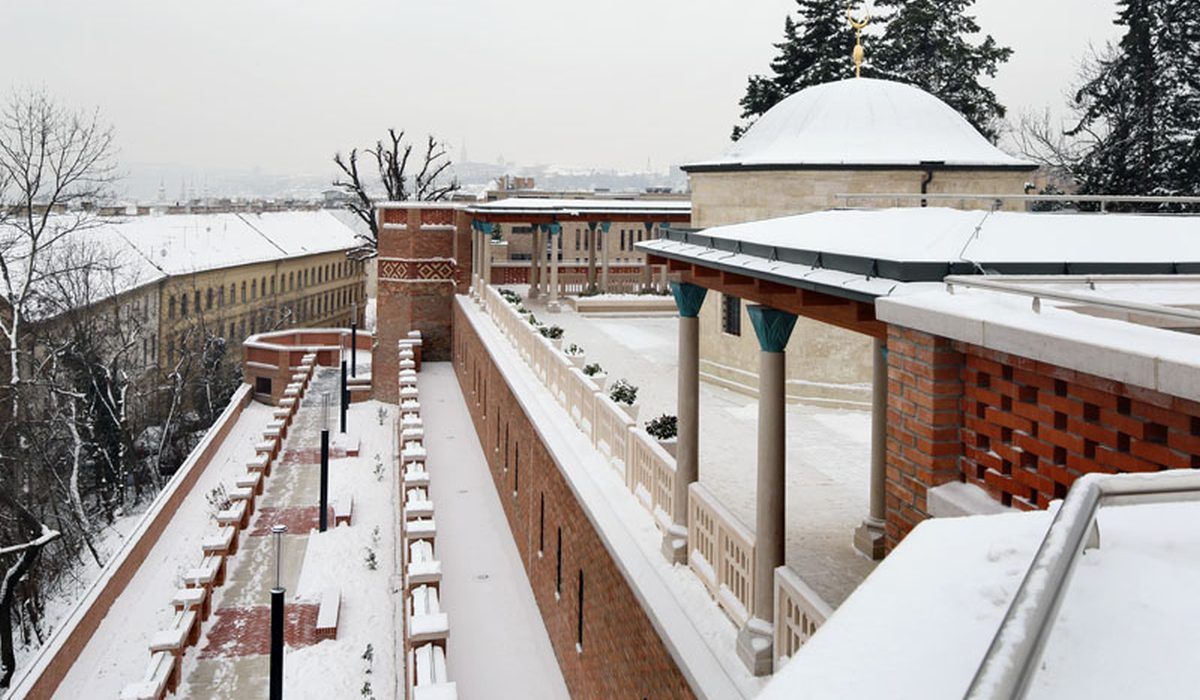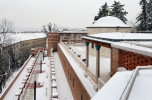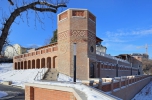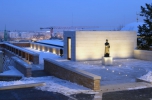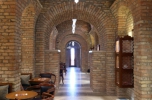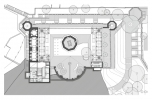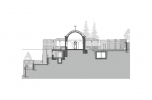Hanging Gardens above Buda
Baba Guel Mausoleum, Budapest
Architect: István Mányi
Text: Eszter Götz
Photos: József Hajdú
Located on a most beautiful site in Buda, this modest-size look-out opens up on the eastern slope of Rózsadomb, which has been the final resting place of a Turkish dervish named Baba Guel for five centuries now. After a long period of its unfortunate history, this monument has now been renewed in its most beautiful form as a result of a joint project of the Hungarian and Turkish states. Now the building and the surrounding park has not only been finely restored but also received a new spatial row with communalcultural functions. Built in 1543, the shrine was overtaken by the Jesuit order after driving away the Turks and reoccupying Hungary. At the end of the 18th century an architect purchased the hillside then cultivated as a vineyard, including the shrine, and built an awesome Neo-Renaissance style mansion. In 1944, during the siege Budapest, this building named the Wagner House was almost entirely destroyed, but even in its perish it defended the shrine. István Mányi architect further developed the previous solution, and was brave enough to rely on the existing cellar level of the mansion, and also had its old masonry walls re-erected. Thus the level below ground level houses the reception desk, the cafe and then the museum set parallel with the River Danube as well as a longitudinal exhibition space turning away on the axis of the former corner bastion. The latter is opened up with arched windows on the exterior. Standing in the middle of the garden, the shrine looks like it may have been about five centuries ago. The garden is graced by an ornate well with a spirally ending spout clad in Turkish tiles.
Leading architects: István Mányi, Dániel Mányi – Mányi István Építész Stúdió Kft.
Architects: Gábor Kardos, Zsófia Réka Szontágh
Consultant: Tamás K. Pintér
Interiors: Stúdió-G Bt. László Gergely
Accessibility: Anna Kormányos
Café: Design Stúdió Kft. Gizella Kuruczné
Acoustics: Kotschy és Társai Kft. András Kotschy
HVAC: Deák Arch’ Design Bt. Anna Deák
Heavy current: György Kapitor and his colleagues – SMG-SISU Budapest Kft.
Light current: István Csányi – Kvinterv Bt.
Elevator: Tamás Szabó – iX Lift Kft.
Landscape: Anikó Andor and her colleagues – Land-A Kft.
Traffic: Ádám Rhorer and his colleagues – Közlekedés Kft.
Outdoor public utilities: Gábor Szigyártó, Lajos Tóbiás – SMG-SISU Kft.
Waterwork: Rilti Kft.
Framework: Lajos Szabó, István Molnár, László Schnieder – Du-Plan Kft.
Soil mechanics: Árpád Petik – Petik Kft.
Fire protection: Optomm Kft.Csuba Bendegúz
Insulation: Miklós Vaszari – Méhes-Renoszig Kft.
Glassworks: Birgit Köblitz
Metalworks: Szabolcs Csányi
Stoneworks: Vidor Kőfalvi, Levente Kőfalvi
Wooden works: Zsolt Kóbor, Péter Zágoni
Restoration expert: Gizella Makolcsi
Art history expert: Judit Lászay
Metalsmith works: József Herédi
Brickworks: Róbert Schweiczer
Archaeology: Budapesti Történeti Múzeum
Stone details: LAKI Épületszobrász Zrt.
Client: Budapest Főváros II. kerületi önkormányzata, Magyar Nemzeti Vagyonkezelő Zrt.
Main contractor: ZÁÉV Építőipari Zrt.
Project management: Consultant Mérnök Iroda Kft.
